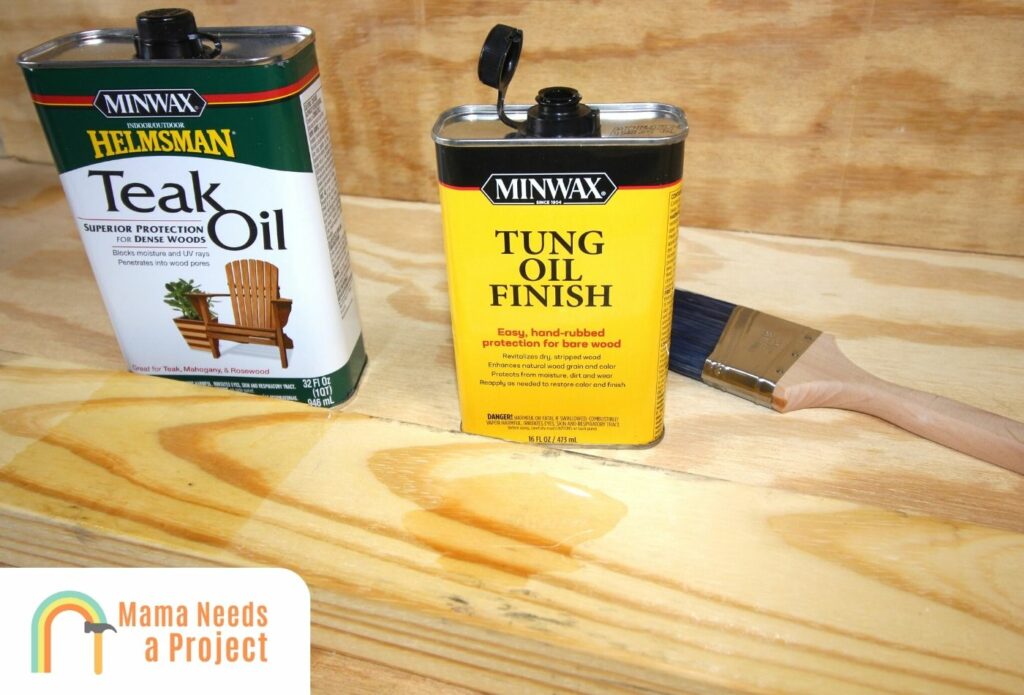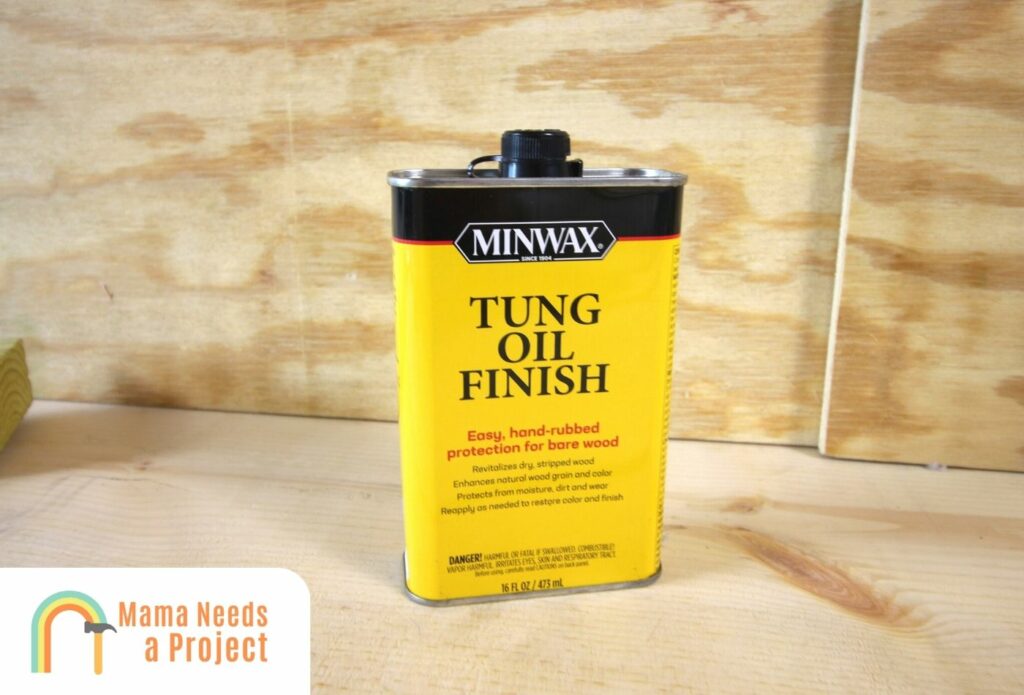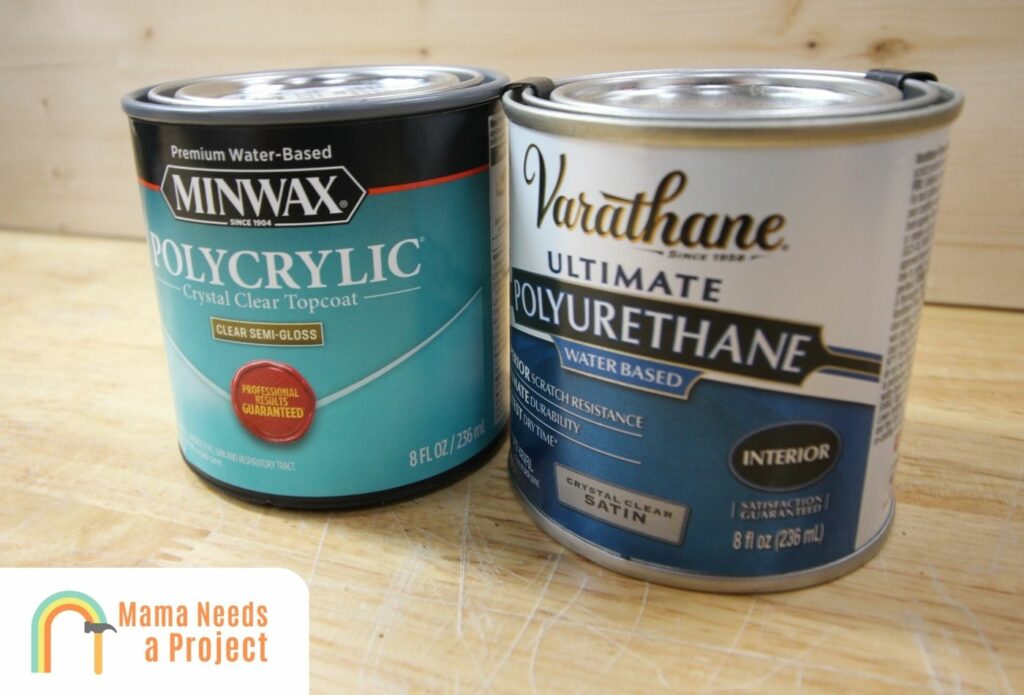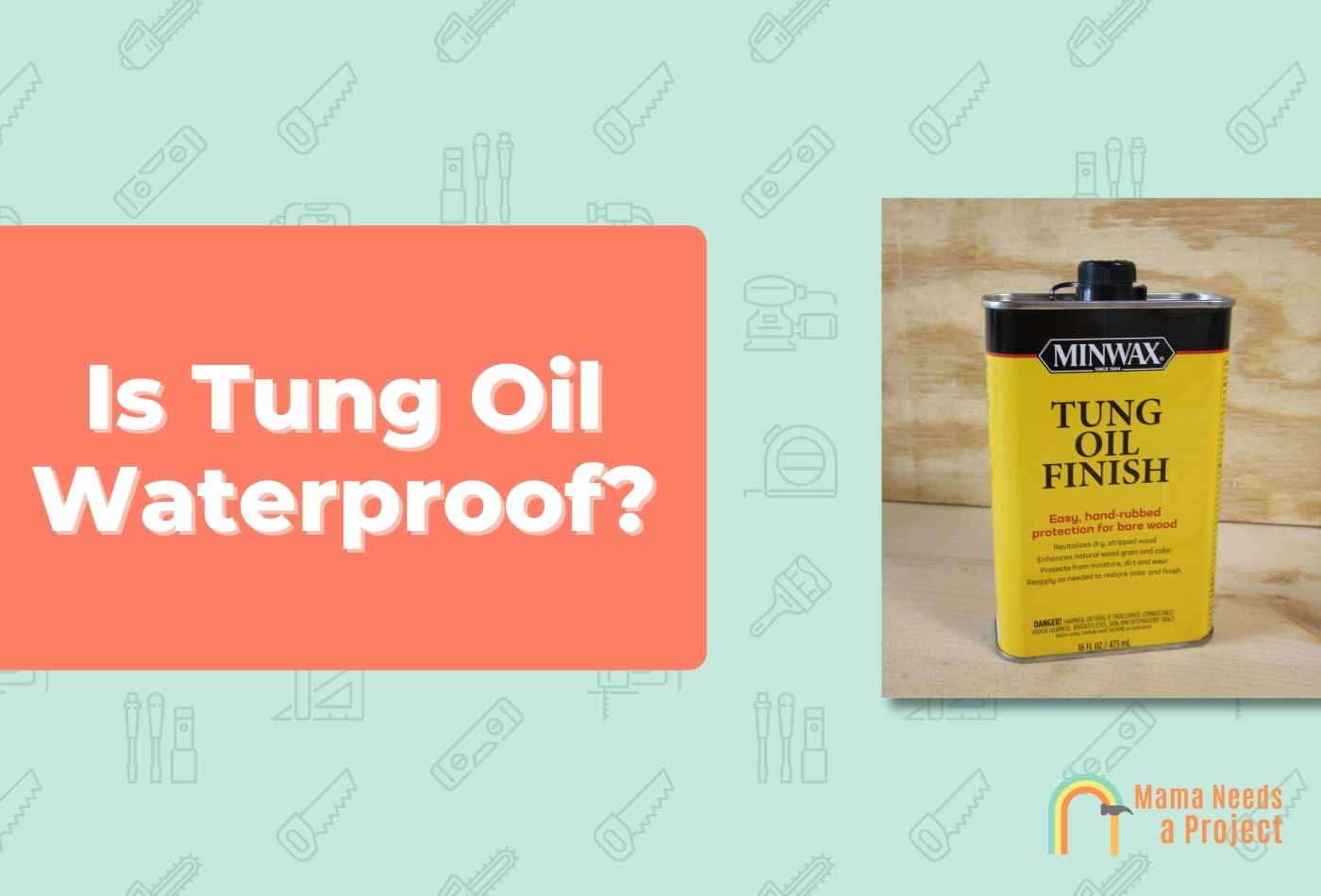Is Tung Oil Waterproof? (What You Should Know)
When it’s time to finish wood furniture, you have a variety of wood finishes to choose from, and one time-tested favorite of mine is tung oil, otherwise known as China wood oil.
But is pure tung oil waterproof?
In this article, I’ll discuss everything you need to know about tung oil’s waterproofness before you use it for your next woodworking project. Let’s dig in!
- Yes, tung oil is waterproof, but only if applied properly to a prepared wood surface. And since it’s waterproof, tung oil is an excellent finish for wooden outdoor furniture and structures.
- While it is waterproof, if tung oil finish is 100% submerged in water for hours on end, eventually it’ll break down.
Does Tung Oil Waterproof Wood?
Yes, tung oil—if applied properly—will waterproof wood. Therefore, if you apply tung oil to a wooden surface, you can expect it to stay moisture-free until the tung oil starts to break down.
But even though tung oil does waterproof wood, it shouldn’t be used on wood surfaces that are either submerged in or constantly making contact with a high volume of water.
Tung oil is one of the only natural wood oils capable of completely waterproofing wood; other wood oils just make wood water-resistant.
Essentially, tung oil is absorbed into the wood pores shortly after application, and when it dries in the pores a waterproof seal is formed.
On the other hand, most finishes that are applied to the top of a surface—like paint and shellac—can let moisture seep underneath, where it may wreak havoc with bare wood, possibly unbeknownst to you.
How to Ensure Tung Oil Is Waterproof When Dry

The key to ensuring tung oil is 100% waterproof when dry is in the surface prep stage.
Put differently, tung oil has the best chance of delivering all the benefits it’s known for if the surface it’s being applied to is properly prepped.
So clean the surface with mineral spirits or warm, soapy water to remove any grime and other elements that erode wood surfaces over time.
Once it’s clean, let the surface dry for at least 24 hours.
After time has passed, rough up the surface with some fine-grit sandpaper to expose the pores and ensure tung oil has an easy time entering and setting in them.
Finally, remove any sawdust from the surface with a vacuum and tack cloth before applying the tung oil.
This surface-prep sequence won’t only ensure a waterproof finish; it’ll ensure a vibrant, visually appealing finish as well.
How Many Coats of Tung Oil to Waterproof Wood?
Since tung oil is a thin, natural oil, you’ll need to apply multiple coats when using this on wood furniture and wood surfaces.
How many coats a wood surface needs is collectively determined by a handful of factors, including species, condition, purpose, and location.
- Species: Softwoods tend to need more coats than hardwoods because they’re more porous.
- Condition: New wooden surfaces don’t need as many coats as weathered wood.
- Purpose: Wood furniture that’s used often needs more coats than rarely-used wooden objects.
- Location: Outdoor furniture will need more coats because it’s exposed to the elements.
And of course, not all tung oils are created equal, so some require more coats than others to ensure a waterproof seal.
In general, for the maximum amount of waterproofness, you should opt for at least 3 coats of tung oil. But sometimes you can exceed 5 coats for greater protection.
Here’s a great video to learn how to apply tung oil properly!
Can You Use Tung Oil on Exterior Wood?
Yes, you can use tung oil to finish exterior wood, since tung oil can withstand light and heavy rain showers, high humidity, and temperature fluctuations.
And despite being non-toxic, tung oil is pest-resistant, and it won’t fade even if exposed to direct sunlight for hours each day.
Still, if it’s possible, you should try to keep wooden furniture that’s been finished with tung oil out of the rain. Of course it can handle the exposure, but if it doesn’t have to resist rain frequently it’ll last much longer, highlighting wood’s natural beauty all the while.
Can You Use Tung Oil Indoors?
Tung oil is also great for indoor wooden furniture, particularly pieces that go in the kitchen, bathrooms, or other rooms with plumbing fixtures.
In the kitchen, for example, cabinets can be coated with tung oil so you don’t have to worry about water from the sink or stove eroding them.
Plus, this is a durable finish that can withstand high heat, and it’s food safe.
In fact, this latter quality is why tung oil is used on cutting boards, butcher blocks, dishes, and wooden cutlery.
This naturally drying oil comes from the tung tree—specifically tung tree nuts—and even today it can serve as an effective wood oil without being laden with toxic additives.
Pros of Tung Oil

Highlights Wood’s Natural Features
Few wood finishes can accentuate grain and natural colors like tung oil.
Tung oil finish has a muted sheen, but it’s still able to bring out wood’s distinct qualities.
Provides Decent Protection
A tung oil finish may not be as strong as polyurethane, but it’s strong enough to withstand constant exposure to the elements, and therefore should be considered a durable wood finish.
Easy Application
Whereas other wood finishes need to be brushed or rolled on, tung oil can be wiped on.
The woodworker has much more control when wiping on finish, so it’s easier to avoid putting down excess oil.
Budget-Friendly & Cost-Effective
So long as you don’t go overboard when applying tung oil, this is not only an effective finish but an affordable one too.
How much tung oil is needed mainly depends on the requirements of the project, but in most cases you shouldn’t have to spend more than $30 on tung oil to complete a project.
Versatile
Unlike oil-based poly, lacquer, and other wood finishes, tung oil can be used on both hardwoods and softwoods, since it neither yellows nor clouds over time.
Tung oil naturally seals wood without altering its appearance, and whereas other products like Danish oil and boiled linseed oil have toxic components, tung oil has none of these.
Cons of Tung Oil
Frequent Maintenance
The only notable downside associated with tung oil is it requires frequent maintenance. If you don’t maintain it as much as necessary, the wood will lose its vibrancy and the protection once afforded by the oil will slowly diminish.
Tung oil penetrates deep into the wood fibers before drying. But once it’s dry, so begins the long, gradual process of its degradation, which can be effectively stunted by touching up the finish 2-3 times a year.
Tung Oil Alternatives
Polyurethane

The best waterproofing sealant for wood and metal surfaces is polyurethane. Its superior ability to protect wood means it’s great for wooden surfaces that are more likely to be damaged.
There are oil-based and water-based versions, and oil-based is strongest. But oil-based poly can turn a wooden surface yellow or amber, and this is the main reason why it’s rarely used on fine furniture and antiques.
It can also get cloudy over time, and when this happens the wood grain gets covered up. Tung oil finish, on the other hand, doesn’t get cloudy, even if it hasn’t been touched up in years.
In short, if a durable waterproof finish is what you’re after, go with a polyurethane. But if highlighting the wood’s features is more important, choose tung oil.
Varnish
Varnish is another popular wood oil, and like tung oil it’s 100% waterproof when dry.
This wood finish resembles polyurethane in many respects, but since it’s designed for use on wood surfaces it doesn’t have some of the problems that diminish polyurethane as wood finish.
Specifically, it can protect wood from the elements, yet it still highlights the wood grain and natural colors.
It’s more viscous and takes longer to dry, but overall it’s fantastic finish for all kinds of wood furniture.
Lacquer
Lacquer, like polyurethane, works on more materials than just wood, and since it’s durable, visually appealing, and waterproof when applied correctly, it’s used on both interior and exterior wood surfaces.
But lacquer can yellow a surface just like poly, so if you want to avoid this it’s best to stick with tung oil or another natural oil.
Teak Oil

Of all the alternatives listed here, teak oil is most similar to tung oil. It’s food-safe, waterproof when dry, and unbelievably good at bringing out even the minor details of a wood surface.
It’s also incredibly durable, which makes sense since teak wood is one of the strongest wood species on earth.
But this non-toxic wood finish can be pricy, especially when compared with tung and linseed oil.
Check out this linseed oil vs tung oil comparison to find out which is better for your project!
Final Thoughts
To recap, pure tung oil finish is waterproof, but only if it’s applied properly and dries without issue.
If tung oil mixes with moisture, either during application or while drying, it’s likely it won’t be 100% waterproof once completely dry.
And even though tung oil finish can keep wood surfaces free of moisture in most instances, it can’t withstand endless exposure to a high volume of water.

